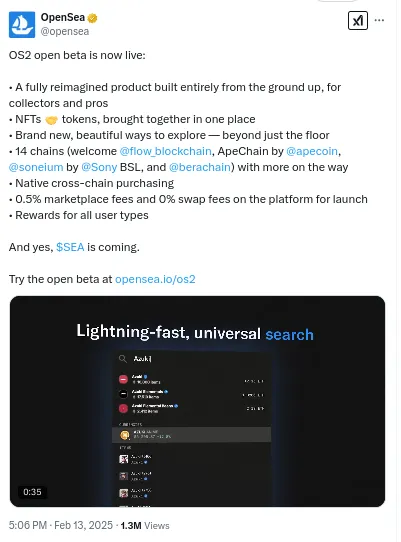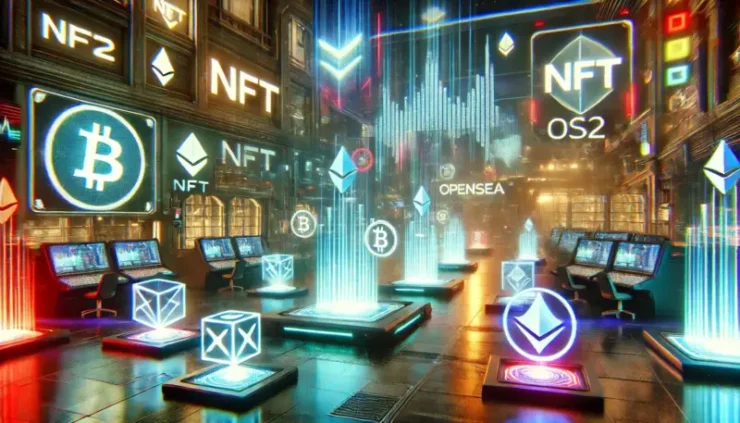OpenSea, once the dominant force in the NFT market, is betting on a full-scale revamp to reclaim its former glory. On February 13, the company announced OS2, a rebuilt platform designed to address past criticisms while embracing a more decentralized, web3-native approach.
Founder Devin Finzer framed the overhaul as a necessary reset. “The NFT bull market changed us. We got too corporate, too web2, and let fear of risk outweigh building for users,” Finzer wrote in a social media post. OS2 introduces several changes, including the trade of both fungible and non-fungible tokens, native cross-chain purchasing, and the long-awaited launch of OpenSea’s own token, $SEA. With a reduced 0.5% marketplace fee and 0% swap fees at launch, OpenSea aims to lure back traders who flocked to competitors like Blur and Magic Eden.
The NFT Market’s Uncertain Future

OS2 new platform launch. Source: OpenSea on X
OpenSea’s ambitious reboot comes at a precarious time for the NFT sector. Once a thriving industry, NFTs have faced a steep decline since their peak in 2021-2022. Following a wave of speculative trading, scams, and security breaches, the industry lost credibility among both crypto enthusiasts and mainstream investors. By 2025, OpenSea’s market dominance had plummeted from 90% to just 33% as competitors capitalized on its missteps.
The decline was exacerbated by broader crypto market downturns and regulatory scrutiny. The U.S. Securities and Exchange Commission (SEC) has been cracking down on NFT projects, and OpenSea has not been immune. The company’s financial troubles were compounded by its reliance on Ethereum (ETH), which suffered a severe price drop in 2022. Meanwhile, internal strife—including layoffs and leadership challenges—contributed to the company’s downturn.
Despite these setbacks, NFT trading volumes rebounded somewhat in 2024, reaching $8.8 billion. However, skepticism remains. Critics argue that OpenSea’s past failures—rampant plagiarism, security vulnerabilities, and inconsistent policies—have not been sufficiently addressed in the OS2 rollout.
A Shift Toward Web3
The most significant aspect of OS2 is its deeper integration with decentralized technologies. OpenSea’s move to support both NFTs and fungible tokens signals an effort to align with broader trends in crypto, particularly as decentralized finance (DeFi) continues to evolve. By embracing a more web3-centric approach, OpenSea hopes to position itself as more than just a marketplace.
While some users have welcomed the changes, others remain skeptical. In Discord communities, beta testers have praised OS2’s smoother functionality and reduced fees, but some lament the loss of key features, such as filtering sales by trait. Security concerns remain largely unaddressed, with OpenSea instead emphasizing user control over assets.
“We have a long journey ahead, but we’re going to keep shipping: NFTs, tokens, creator tools, AI x crypto, things we’ve just started mapping out,” Finzer said, hinting at broader ambitions beyond marketplace transactions.
Whether OS2 marks the beginning of OpenSea’s comeback or a final attempt to regain relevance remains uncertain. With a fractured user base, increased competition, and lingering regulatory threats, the company’s future hinges on whether its revamped platform can restore trust in an industry still struggling to define its long-term viability.





